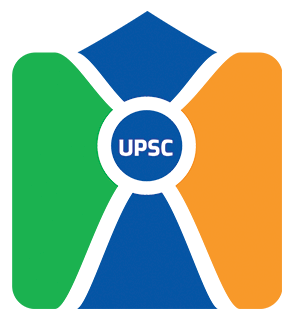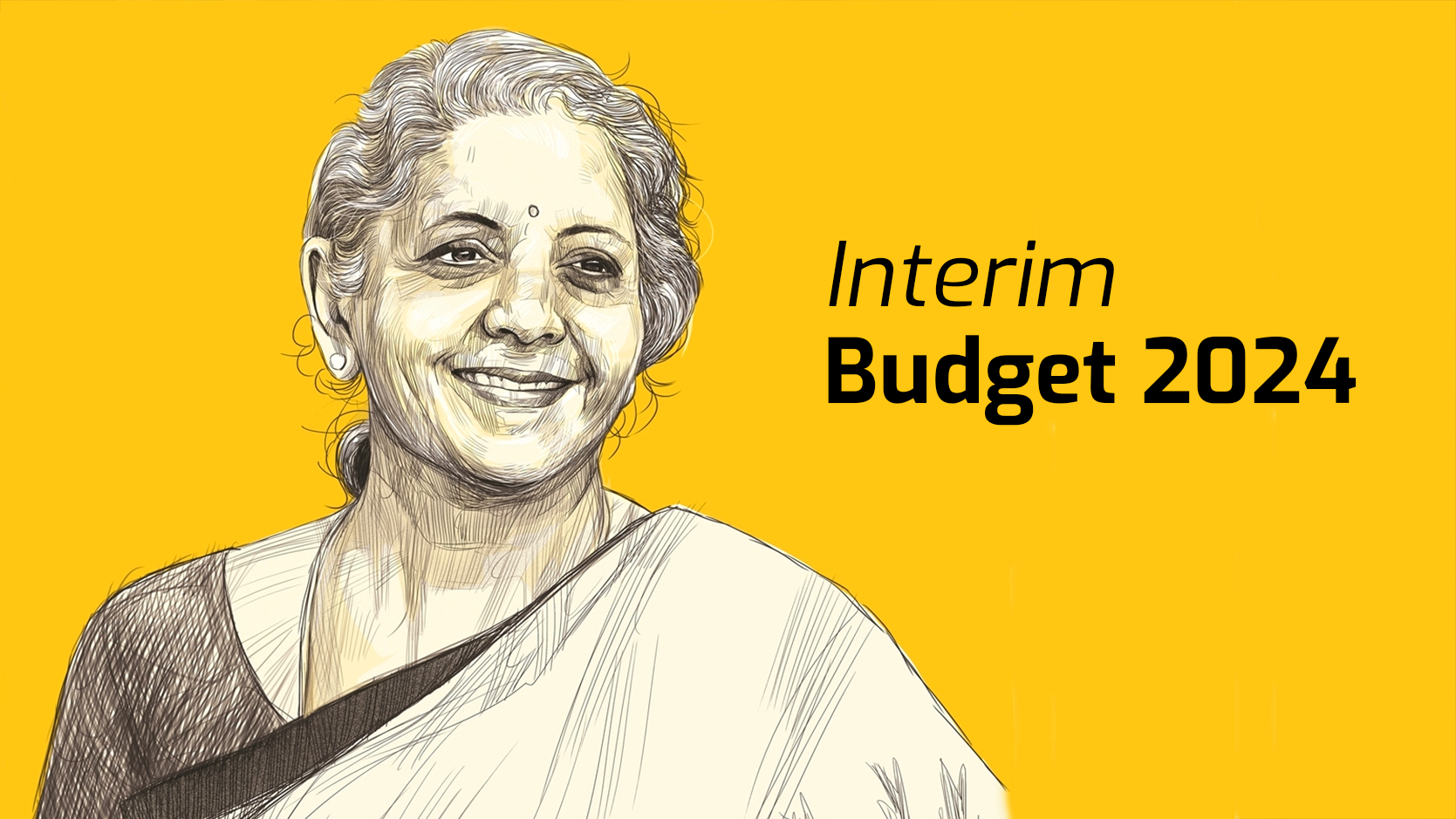UPSC Statistics Syllabus: The UPSC Statistics optional syllabus for the mains examination is comprehensive and covers a wide range of topics in two papers, Paper I and Paper II.
This paper emphasises the application of statistical techniques in various fields, including economics, demography, and quality control, making it essential for candidates to develop a robust understanding of both theoretical concepts and their practical applications.
The detailed and structured syllabus is designed to test the aspirant’s knowledge and analytical skills in statistics, ensuring a thorough preparation for those opting for this specialized subject.
UPSC Statistics Syllabus
Out of the 48 subjects listed for the UPSC Mains, Statistics is a preferred optional subject for those with an educational background in statistics. The Statistics optional subject covers key concepts such as descriptive statistics, probability theory, statistical inference, regression analysis, time series analysis, and sampling techniques.
Selecting Statistics as an optional subject for the UPSC Mains can be a strategic choice, particularly for candidates with a background in statistics or mathematics. The Statistics optional covers a wide array of fundamental and advanced topics, making it a robust choice for those comfortable with quantitative analysis.
UPSC Statistics Syllabus Exam Pattern 2024
The Statistics optional for the UPSC Mains examination is designed to evaluate the candidate’s grasp of statistical concepts and their analytical skills. The examination consists of two papers – Paper I and Paper II. Each paper is worth 250 marks, making a total of 500 marks for the optional subject. Here is a detailed overview of the exam pattern:
| Particular | Details |
| Total Papers | Two (Paper I and Paper II) |
| Total Marks | 500 (250 marks each) |
| Time Allowed | 3 hours for each paper |
| Sections | Section A and Section B |
| Questions | 8 questions with subparts in each paper |
| Compulsory Questions | Question No. 1 from Section A and Question No. 5 from Section B |
| Marks Distribution | 10, 15, and 20 marker questions |
UPSC Statistics Syllabus for Paper 1
The Statistics optional syllabus for UPSC Mains is designed to assess candidates’ grasp of core statistical concepts and their practical applications. The syllabus is detailed and covers a broad spectrum of topics. Here is a detailed analysis of the syllabus for Paper I and Paper II.
- Probability
- Sample space and events: Probability measure and probability space, random variable as a measurable function.
- Distribution function of a random variable: Discrete and continuous-type random variable, probability mass function, probability density function, vector-valued random variable.
- Marginal and conditional distributions: Stochastic independence of events and random variables, expectation and moments of a random variable, conditional expectation.
- Convergence of a sequence of random variables: In distribution, in probability, in path mean, and almost everywhere; criteria and inter-relations.
- Inequalities and theorems: Chebyshev’s inequality, Khintchine’s weak law of large numbers, strong law of large numbers, Kolmogorov’s theorems.
- Functions and theorems: Probability generating function, moment generating function, characteristic function, inversion theorem.
- Central limit theorem: Lindenberg and Levy forms.
- Standard distributions: Standard discrete and continuous probability distributions.
- Statistical Inference
- Properties of estimators: Consistency, unbiasedness, efficiency, sufficiency, completeness, ancillary statistics.
- Theorems and estimations: Factorization theorem, exponential family of distribution and its properties, UMVU estimation, Rao-Blackwell and Lehmann-Scheffe theorems, Cramer-Rao inequality for single parameter.
- Estimation methods: Methods of moments, maximum likelihood, least squares, minimum chi square, modified minimum chi square.
- Properties and efficiency: Properties of maximum likelihood and other estimators, asymptotic efficiency.
- Bayesian methods: Prior and posterior distributions, loss function, risk function, minimax estimator, Bayes estimators.
- Hypothesis testing: Non-randomised and randomised tests, critical function, MP tests, Neyman-Pearson lemma, UMP tests, monotone likelihood ratio.
- Tests and bounds: Similar and unbiased tests, UMPU tests for single parameter, likelihood ratio test and its asymptotic distribution, confidence bounds and its relation with tests.
- Goodness of fit: Kolmogorov’s test for goodness of fit and its consistency, sign test and its optimality, Wilcoxon signed-ranks test and its consistency.
- Non-parametric tests: Kolmogorov-Smirnov two-sample test, run test, Wilcoxon-Mann-Whitney test, median test, their consistency and asymptotic normality.
- Sequential tests: Wald’s SPRT and its properties, OC and ASN functions for tests regarding parameters for Bernoulli, Poisson, normal and exponential distributions, Wald’s fundamental identity.
- Linear Inference and Multivariate Analysis
- Linear statistical models: Theory of least squares and analysis of variance, Gauss-Markoff theorem.
- Normal equations: Least squares estimates and their precision, test of significance, interval estimates based on least squares theory.
- Data classification analysis: One-way, two-way, and three-way classified data.
- Regression analysis: Linear regression, curvilinear regression, orthogonal polynomials, multiple regression, multiple and partial correlations.
- Variance and covariance: Estimation of variance and covariance components.
- Multivariate distribution: Multivariate normal distribution, Mahalanobis’s D2 and Hotelling’s T2 statistics, their applications and properties.
- Multivariate techniques: Discriminant analysis, canonical correlations, principal component analysis.
- Sampling Theory and Design of Experiments
- Sampling approaches: Outline of fixed-population and super-population approaches, distinctive features of finite population sampling.
- Probability sampling designs: Simple random sampling with and without replacement, stratified random sampling, systematic sampling and its efficacy, cluster sampling, two-stage and multi-stage sampling.
- Estimation methods: Ratio and regression methods of estimation involving one or more auxiliary variables, two-phase sampling, probability proportional to size sampling with and without replacement.
- Estimators: The Hansen-Hurwitz and the Horvitz-Thompson estimators, non-negative variance estimation with reference to the Horvitz-Thompson estimator, non-sampling errors.
- Fixed and random effects models: Fixed effects model (two-way classification), random and mixed effects models (two-way classification with equal observation per cell).
- Designs: CRD, RBD, LSD and their analyses, incomplete block designs.
- Concepts of orthogonality and balance: BIBD, missing plot technique.
- Factorial experiments: Factorial experiments, 24 and 32, confounding in factorial experiments, split-plot and simple lattice designs, transformation of data, Duncan’s multiple range test.
UPSC Statistics Syllabus for Paper 2
- Industrial Statistics
- Process and product control: General theory of control charts, different types of control charts for variables and attributes (X, R, s, p, np charts), and cumulative sum charts.
- Sampling plans: Single, double, multiple, and sequential sampling plans for attributes, OC, ASN, AOQ, and ATI curves, concepts of producers and consumer’s risks, AQL, LTPD, and AOQL. Sampling plans for variables, using Dodge-Romig tables.
- Reliability: Concept of reliability, failure rate and reliability functions, reliability of series and parallel systems, renewal density and renewal function.
- Failure models: Exponential, Weibull, normal, lognormal. Problems in life testing, censored and truncated experiments for exponential models.
- Optimization Techniques
- Operations Research models: Different types of models, their construction, and general methods of solution, simulation, and Monte-Carlo methods.
- Linear Programming (LP): Formulation of LP problems, simple LP model and its graphical solution, the simplex procedure, the two-phase method, and the M-technique with artificial variables, the duality theory of LP, economic interpretation, and sensitivity analysis.
- Transportation and assignment problems: Solution methods for rectangular games, two-person zero sum games (graphical and algebraic methods).
- Replacement policies: Replacement of failing or deteriorating items, group and individual replacement policies.
- Inventory management: Concept of scientific inventory management, analytical structure of inventory problems, simple models with deterministic and stochastic demand with and without lead time, storage models, dam type models.
- Markov chains and queuing theory: Homogeneous discrete-time Markov chains, transition probability matrix, classification of states, ergodic theorems, homogeneous continuous-time Markov chains, Poisson process, elements of queuing theory (M/M/1, M/M/K, G/M/1, M/G/1 queues).
- Statistical software: Solution of statistical problems using well-known statistical software packages like SPSS.
- Quantitative Economics and Official Statistics
- Time series analysis: Determination of trend, seasonal, and cyclical components, Box-Jenkins method, tests for stationary series, ARIMA models, and forecasting.
- Index numbers: Commonly used index numbers (Laspeyres, Paasche, Fisher’s ideal, chain-base), uses and limitations, index numbers for wholesale prices, consumer prices, agricultural and industrial production, tests for index numbers (proportionality, time-reversal, factor-reversal, circular).
- Econometric models: General linear model, ordinary least squares, generalized least squares, multicollinearity, autocorrelation, heteroscedasticity, test for independence of disturbances.
- Simultaneous equations: Concept of structure, identification (rank and order conditions), two-stage least squares method.
- Official statistics: Present system in India relating to population, agriculture, industrial production, trade, and prices. Methods of collection, reliability, and limitations, principal publications, various official agencies, and their functions.
- Demography and Psychometry
- Demographic data: Sources (census, registration, NSS surveys), limitations, and uses.
- Vital rates and ratios: Definition, construction, and uses of vital rates and ratios, fertility measures, reproduction rates, morbidity rate, standardized death rate.
- Life tables: Complete and abridged life tables, construction from vital statistics and census returns, uses of life tables.
- Population growth: Logistic and other growth curves, fitting a logistic curve, population projection, stable and quasi-stable populations, techniques for estimating demographic parameters.
- Health statistics: Standard classification by cause of death, health surveys, and hospital statistics.
- Psychometry: Standardization of scales and tests, Z-scores, standard scores, T-scores, percentile scores, intelligence quotient, validity and reliability of test scores, factor analysis, and path analysis.
Best Books for Statistical Optional
Here are some recommended books for Statistics Optional preparation:
- “An Introduction to Probability Theory & Mathematical Statistics” by V K Rohtagi
- This comprehensive book provides a solid foundation in probability theory and mathematical statistics, covering essential concepts and techniques required for the UPSC Statistics Optional exam.
- “Introductory Probability and Statistical Applications” by Paul Meyer
- An excellent introductory text that presents probability and statistics in an accessible manner, with practical applications and examples relevant to the UPSC syllabus.
- “Fundamentals of Statistics” (2 Vol.) by A M Goon, M K Gupta, and B Dass Gupta
- A classic text offering in-depth coverage of fundamental statistical concepts, including descriptive statistics, probability theory, and inferential statistics, suitable for both Paper 1 and Paper 2 of the UPSC exam.
- “Sampling Techniques” by William G. Cochran
- This book is indispensable for understanding sampling methods and techniques, an important topic in Paper 2 of the UPSC Statistics Optional syllabus.
- “Fundamentals of Applied Statistics” by S C Gupta and V K Kapoor
- A practical guide to applied statistics, covering various statistical techniques and their applications in real-world scenarios, which is beneficial for both theory and practical aspects of the exam.
- “Quantitative Economics” by Hoover
- An essential resource for understanding quantitative methods in economics, including regression analysis, time series analysis, and other advanced statistical techniques relevant to Paper 2 of the UPSC Statistics Optional syllabus.
- “Sampling Theory of Surveys with Applications” by B. V Sukhatme & B V Sukhatme
- This book provides a comprehensive overview of sampling theory and its applications in surveys, which is essential for Paper 2 of the UPSC Statistics Optional exam.
Is Statistics Optional a Good Subject for UPSC?
Yes, Statistics can be a good subject for the UPSC exam for several reasons:
- Scoring Potential: The subject is objective and formula-based, offering candidates the opportunity to score well with thorough understanding and practice.
- Less Competition: Compared to popular optional subjects like Public Administration or History, Statistics typically has fewer candidates, providing a chance for higher marks due to reduced competition.
- Logical and Structured: Statistics involves logical reasoning and structured problem-solving, which aligns well with the demands of the UPSC exam.
- Relevance in Various Fields: Statistics finds application in various fields such as economics, governance, public policy, and data analysis, making it relevant for administrative roles.
- Career Opportunities: Opting for Statistics can open doors to career opportunities in sectors such as data analysis, research, economics, finance, and government policymaking.
However, it is important to consider your background, aptitude, and interest in the subject before choosing it as an optional. If you have a background in mathematics, statistics, or economics, and you enjoy working with numbers and data, Statistics can be an excellent choice for you.
Preparation Strategy for UPSC Statistics Optional Subject
Preparing for the UPSC Statistics optional subject requires a focused and strategic approach. Here’s a comprehensive preparation strategy:
- Understand the Syllabus: Familiarize yourself with the UPSC Statistics optional syllabus thoroughly. Divide it into manageable sections and prioritize topics based on their weightage in previous years’ question papers.
- Select Study Materials: Choose reliable study materials such as standard textbooks, reference books, and online resources that cover the entire syllabus comprehensively. Some recommended books include NCERT textbooks, Indian Accounting Standards, and reference books by renowned authors in Statistics.
- Create a Study Plan: Develop a realistic study plan that allocates sufficient time to cover each topic systematically. Include regular study sessions, revisions, practice questions, and mock tests in your schedule to reinforce learning and track your progress.
- Practice Previous Years’ Papers: Solve previous years’ question papers and sample papers to familiarize yourself with the exam pattern, question types, and time management. Analyze your performance and identify areas that need improvement.
- Practice Numerical Problems: Statistics is a quantitative subject, so practice solving numerical problems regularly. Focus on understanding concepts and formulas and apply them to solve problems from various topics such as probability, inference, and optimization.
- Focus on Conceptual Understanding: Instead of rote learning, focus on developing a strong conceptual understanding of statistical principles and methods. Pay attention to underlying theories, assumptions, and practical applications of statistical techniques.
- Regular Revision: Schedule regular revision sessions to reinforce your learning and improve retention. Create concise notes summarizing important concepts, formulas, and key points to aid in quick revision before the exam.
- Seek Guidance: Consider joining coaching institutes or online platforms that offer specialized guidance and resources for Statistics optional preparation. Engage with peers, mentors, and subject matter experts to clarify doubts and gain additional insights.
- Stay Updated: Stay updated with current affairs and developments in the field of Statistics, especially topics relevant to the UPSC syllabus. Follow reputable statistical journals, websites, and publications to enhance your knowledge.
- Stay Calm and Confident: Lastly, maintain a positive attitude, stay calm, and stay confident throughout your preparation journey. Believe in your abilities and stay focused on your goal of cracking the UPSC exam with Statistics optional.






